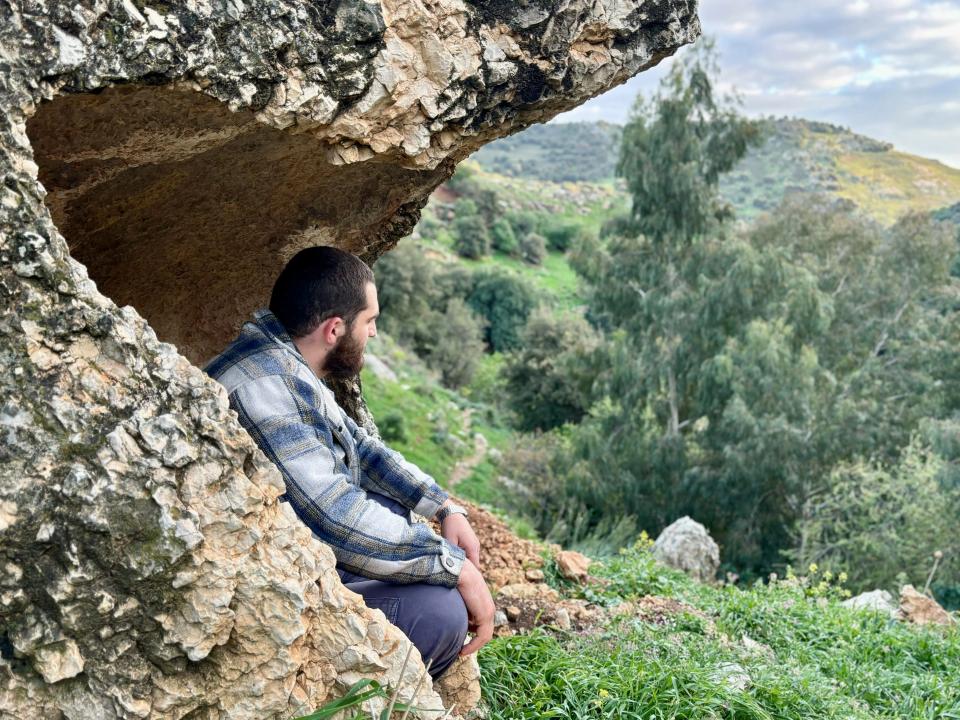
I. Introduction: The Solo Traveler's Quest for Authentic Connection
Picture this: you’re a solo traveler, perhaps watching a sunset paint the sky in a city thousands of miles from home. The sights have been incredible, your camera roll is bursting, but there’s a quiet yearning for something… more. That "more" is often the magic of human connection. As a solo explorer, you're uniquely positioned – vulnerable, yes, but also incredibly open to the world in a way that group travel sometimes shields us from.
Why does this matter so much? Because connecting with locals transforms a trip from a mere sightseeing tour into a deeply meaningful, immersive experience. It’s the difference between observing a culture from the outside and getting a precious glimpse from within. For solo travelers, these interactions can be particularly poignant, offering not just companionship but a richer understanding that goes far beyond ticking off landmarks. I've found that these are the moments that truly shape our journeys and our perspectives.
So, how do you bridge that gap between tourist and temporary local? This post is your guide. We're diving into practical, actionable strategies for solo travelers to genuinely connect with local communities, understand their culture, and, frankly, have a much more enriching adventure. At Wonders of Travel, we believe this kind of "thoughtful exploration" is key to gaining a "deeper appreciation" for the incredible diversity of our world. Let's get started, shall we?
II. Laying the Groundwork: Preparation for Meaningful Interaction
Before you even step on the plane, a little prep work can make all the difference in fostering genuine connections. Think of it as tilling the soil before planting seeds; you’re creating fertile ground for authentic interactions to blossom. It’s not just about logistics; it’s about cultivating the right mindset and showing you care.
A. The Mindset of an Open Explorer
First things first: your attitude is your passport to connection. Cultivating curiosity, humility, and respect is paramount. Approach new cultures as a student, eager to learn, rather than an expert there to judge. This means being genuinely interested in others' lives and perspectives.
Your body language speaks volumes before you even utter a word. An open posture, a ready smile, and making eye contact (where culturally appropriate, of course) signal that you're approachable and friendly. It might sound simple, but these small cues can break down invisible barriers. And yes, overcoming shyness or the fear of rejection is part of the journey; remember, most people are kind and often flattered by genuine interest.
B. Do Your Homework (It Shows You Care)
Imagine someone visiting your hometown and making an effort to speak a few words of your language or showing interest in local customs. It’s endearing, right? The same applies when you're the visitor. Learning a few basic French phrases for travel or essential greetings in any local language shows immense respect. You don't need to be fluent; even a simple "hello," "thank you," or "my name is" can open doors. Apps like Duolingo are fantastic for getting started before your trip, helping you learn a language for your next adventure.
Beyond language, take some time to understand key cultural norms and etiquette. This could be anything from greeting customs and gestures to avoid, to tipping practices or appropriate dress. For instance, knowing the cultural etiquette for Rome, like dressing modestly for religious sites, or understanding why cultural awareness is key when travelling in conservative regions, prevents unintentional offense and shows you've made an effort. A little research into local interests, perhaps a popular sport or a significant upcoming festival, can also provide great conversation starters, showing you see the place as more than just a backdrop for your photos. Resources like Lonely Planet often highlight local etiquette and can be invaluable.
C. Choosing Your Base Wisely
Where you choose to lay your head at night can significantly impact your opportunities for local interaction. While large, anonymous chain hotels have their comforts, they can also be isolating. Consider accommodations that naturally foster connection. Homestays, guesthouses, smaller locally-owned hotels, or even hostels with vibrant communal areas can be goldmines for meeting both locals and fellow travelers. For example, a place like Green Haven Homestay in Lombok offers a chance to connect with a host family.
Furthermore, think about the neighborhood. Staying in areas where locals live, work, and play, rather than in tourist-centric enclaves, immerses you more directly in the daily rhythm of the place. This proximity naturally leads to more organic encounters.
III. On the Ground: Practical Strategies to Connect with Locals
Once you've arrived, armed with an open mind and a bit of cultural knowledge, it's time to actively seek out those connections. It’s about turning everyday moments into opportunities and intentionally placing yourself in situations where interaction is natural.
A. Everyday Encounters: Turning the Mundane into Meaningful
Some of the best connections happen in the most ordinary places. Shopping at local markets is a fantastic way to start. Engage with vendors, ask about their produce or crafts – you’ll not only get fresh goods but also a slice of local life. Many cities boast vibrant markets, like Philadelphia’s Reading Terminal Market or Phoenix’s Uptown Farmers Market, perfect for such interactions.
When it comes to food, venture beyond the tourist traps and eat where locals eat. Ask your guesthouse owner or a friendly shopkeeper for their favorite neighborhood spot. Using public transportation, as Nomadic Matt often advises for new travelers, is another excellent way to observe daily life and perhaps strike up a casual conversation. Even something as simple as asking for directions (yes, even if you have a map!) can be a non-intrusive way to initiate contact. And never underestimate the power of a sincere compliment; it can truly open doors. For pre-trip connections, apps like Backpackr, mentioned by Lonely Planet as a way to meet people while travelling, or EatWith for shared dining experiences can ease you into local social scenes.
B. Seek Out Shared Interests & Activities
One of the most effective ways to connect is by engaging in activities you genuinely enjoy, alongside locals who share those interests. This creates an immediate common ground. Taking a local class – be it cooking, dance, art, or a craft workshop – is a brilliant avenue for local travel experiences. Platforms like Withlocals and Lonely Planet Experiences connect travelers with local guides for unique tours, from street art walks to historical deep dives. Imagine learning to prepare regional dishes through an Airbnb Cooking Experience with an Italian nonna or a spice master in Mumbai.
Look for language exchange meetups, often advertised online (e.g., on Meetup.com under language exchange topics) or in local cafes. Attending local events and festivals is another fantastic way to immerse yourself; check community boards or ask around. For those looking for deeper engagement, short-term, ethical volunteering can offer profound immersion. Organizations like Working Abroad facilitate projects that genuinely benefit communities, but it's crucial to research thoroughly to ensure your efforts are helpful and not harmful, avoiding the pitfalls of "voluntourism" by understanding why cultural awareness is key. Participating in local festivals or community initiatives, much like businesses engage in Local SEO Content Marketing by sponsoring local events, can create authentic bonds. You can even use social media, leveraging tactics similar to those in Integrating Social Media with Local SEO, to discover these local happenings.
C. The Art of Conversation (When You Don't Speak Fluently)
What if your language skills are, shall we say, a work in progress? Don't let that deter you! Patience and active listening are universal languages. Show that you're genuinely trying to understand, and people will often meet you halfway.
Translation apps, like Talk & Translate, can be incredibly helpful tools, but try not to let them become a barrier. Use them to facilitate, then put the phone away and engage. Non-verbal communication – a warm smile, expressive gestures, an attentive nod – can convey a lot. As Nomadic Matt emphasizes, just being present and respectful goes a long way. If your language skills allow, ask open-ended questions; inquiries about family traditions or favorite local spots, like those shared by guests at Green Haven Homestay, often lead to richer conversations. Sometimes, knowing just a few key numbers and food terms or having a vacation cheat sheet for Germany can be more practical for daily interactions than complex grammar.
D. Be a Giver, Not Just a Taker
Meaningful connection is a two-way street. While you're there to learn and experience, also think about what you can offer. If asked and it feels appropriate, share a little about your own culture. People are often just as curious about your life as you are about theirs.
If you've made a particularly significant connection, a small, thoughtful token of appreciation can be a lovely gesture – perhaps a postcard from your home country or a small local craft you picked up elsewhere on your travels. And, of course, one of the most direct ways to give back is to support local businesses directly. Choose local restaurants, artisans, and guides whenever possible. This approach mirrors how businesses build trust through hyper-local content strategies, focusing on genuine community engagement.
IV. Navigating with Grace: Sensitivity, Safety, and Boundaries
As you venture into the world of local connections, it's vital to navigate these interactions with grace, keeping cultural sensitivity, personal safety, and respect for boundaries at the forefront. This ensures your experiences are positive for everyone involved.
A. Cultural Sensitivity in Action
This goes beyond the pre-trip research; it's about being observant and adaptable in the moment. Always observe before acting, especially in unfamiliar social situations. Pay attention to how locals interact, their personal space, and the topics of conversation they seem comfortable with. For example, understanding the cultural etiquette in Rome regarding dress or dining can make interactions smoother. Similarly, being aware of customs like removing shoes before entering homes in Thailand, as highlighted by resources like Conscious Explorer, shows respect.
Misunderstandings can happen, even with the best intentions. If you inadvertently cause offense, a sincere and graceful apology can often mend things. Knowing a simple "excuse me" or "I'm sorry" in the local language, like “Excusez-moi” in French, can be invaluable. Being aware of regional norms, such as different tipping practices highlighted by BBC Good Food's etiquette guides or understanding market dynamics from sources like Lonely Planet's look at US food markets, helps you tread lightly and respectfully.
B. Safety for the Solo Traveler
Your safety is paramount, especially when traveling solo and meeting new people. Always trust your intuition. If a situation or person makes you feel uncomfortable, remove yourself politely but firmly. When meeting new acquaintances, arrange to do so in public places initially.
Be mindful not to overshare personal information too quickly. While openness is encouraged for connection, discernment is key. If you plan to meet up with a new local contact, it's a good idea to let someone know your plans – perhaps the staff at your guesthouse, like at Green Haven Homestay, or a friend back home. While some destinations like Ireland and Japan are ranked among the safest countries for solo women travelers, vigilance is always wise. Even apps designed for connection, like Tinder's Passport feature mentioned by Lonely Planet, should be used with caution and clear boundaries for platonic meetups. As Nomadic Matt suggests in his solo female travel packing guide, simple tools like a whistle can add a layer of security.
C. Respecting Boundaries
Just as you have your boundaries, so do the locals you meet. It's important to understand when an interaction has naturally run its course. Don't overstay your welcome or impose on people's time or generosity.
Be sensitive to cues that someone may be busy or not interested in a prolonged conversation. A polite thank you and a warm farewell are often the best way to conclude an interaction, leaving a positive impression. The goal is genuine connection, not forced friendship.
V. The Lasting Rewards: Beyond the Trip Itself
So, why go to all this effort? What are the real takeaways from seeking out these deeper connections? I can tell you from experience, the rewards are immeasurable and extend far beyond the duration of your trip.
These interactions profoundly enrich your understanding of the world and, surprisingly, of yourself. Stepping into another person's life, even briefly, offers perspectives that no guidebook can provide. The memories created through shared laughter over a meal with a homestay family, like those described by travelers to Green Haven, or the insights gained from a local guide's personal stories on a Withlocals tour, are often the most cherished souvenirs.
Moreover, these connections can spark potential for lasting friendships or inspire future return visits. I've heard countless stories of travelers forming bonds through language exchange meetups that lead to lifelong correspondence and even reciprocal trips. Engaging in meaningful activities, like volunteering for Loggerhead turtle conservation in Georgia or other projects via Working Abroad, can foster a deep sense of purpose and connection to a place and its people. Ultimately, this is what "Wonders of Travel" is all about: travel that leads to "perspectives gained," transforming us long after we've unpacked our bags, a sentiment echoed by travel authorities like Lonely Planet and seasoned explorers like Nomadic Matt.
VI. Conclusion: Your Journey to Deeper Connection Awaits
Connecting with locals as a solo traveler isn't just a lofty ideal; it's an achievable, incredibly rewarding way to experience the world. It requires a bit of courage to step outside your comfort zone, a dash of preparation, and a genuine dose of curiosity. But the richness it adds to your journey is unparalleled. From mastering a few basic phrases with tools like Duolingo to choosing ethical and immersive local travel experiences, every small effort can bridge the gap between being a visitor and feeling like a welcome guest.
As the travel landscape evolves, with a growing emphasis on sustainability and authentic engagement, initiatives like carbon-neutral experiences highlighted by Lonely Planet and Withlocals or the community focus of Global Vision Award winners, show that mindful exploration is the future. You can even use modern tools like voice search, a growing trend noted in SEO Trends for 2025, to find those "hidden gem" local spots. The world’s true wonders often lie not just in its grand monuments, but in the everyday lives and stories of its people. Your journey to deeper connection awaits – all you have to do is reach out.


